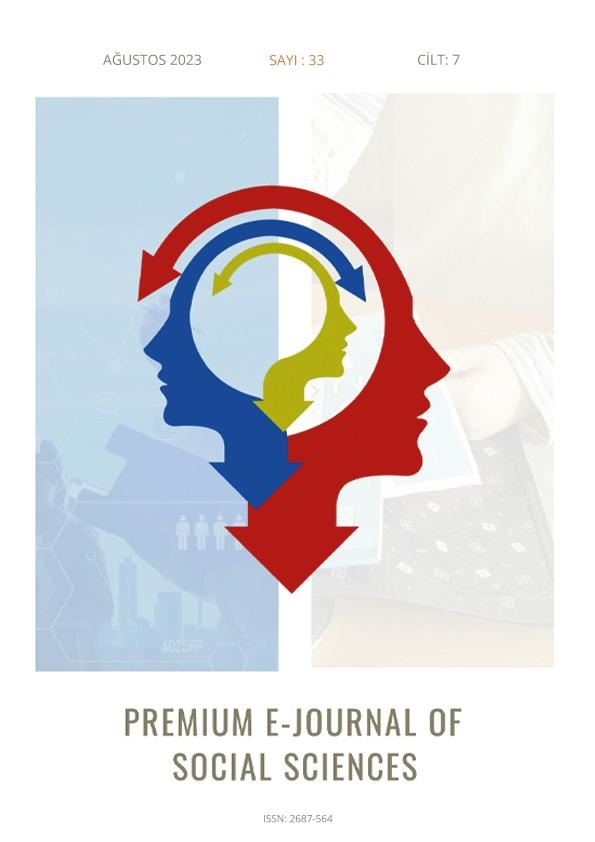Fotorealist Bağlamda Chuck Close Portreleri
DOI:
https://doi.org/10.5281/zenodo.8278603Anahtar Kelimeler:
Fotorealizm, Chuck Close, PortreÖzet
Fotorealizm, ABD’de 1960'ların sonlarında ve 1970'lerin başlarında Soyut Dışavurumculuk ile Minimalist sanata karşı bir hareket olarak gelişmiştir. Fotorealist hareket, ilhamını ve kaynak malzemesini sanatçının kullanabileceği ışık veya doku detaylarını sağlayacak olan fotoğraftan almıştır. Fotorealizm, bir fotoğrafı inceleyerek görüntünün başka bir ortamda olabildiğince gerçekçi bir şekilde yeniden üretmeye çalışıldığı resim, çizim ve diğer grafik ortamları kapsayan bir sanat türü olarak kabul edilmektedir. Tjalf Sparnaay, Ralph Goings, Audrey Flack, Richard Estes, Ron Mueck, Duane Hanson, gerçekliği fotoğraf aracılığıyla yeniden üreten fotorealist sanatçılar arasındadır. Amerikalı sanatçı Chuck Close'un (1940-2021) çalışmaları da 1960'larda fotorealizm bağlamında ortaya çıkmış ve başlangıçta bu şekilde tanımlanmıştır. Daha sonraları Close’un çalışmaları, onu salt fotorealizmle değil, aynı zamanda kavramsal sanat ile de ilişkilendirmiştir. Sanatçı, ilk çalışmalarında airbrush tekniğini kullanmış, böylece ressamın bir ifadesi olarak fırça izlerinden ve kişisel üsluptan kaçınmıştır. Bu çalışmalarında Close, fotoğrafın verdiği tüm detayları resimlerine yansıtmıştır. Adeta bir matbaa baskısı gibi eserlerini, renkleri sırasıyla noktalar halinde bir araya getirerek oluşturmuştur. 1988'de geçirdiği felç ve gördüğü yoğun tedavinin ardından tekerlekli sandalyeye mahkûm olan sanatçı, atölyesini ve çalışma araçlarını fiziksel olarak yeni durumuna uyarlayarak ve portre temasına, eskisi kadar detaycı olmasa da geri dönerek resim yapmaya devam etmiştir. Chuck Close'u fotorealist hareketin ötesine götüren şey, ilk dönem çalışmalarından farklı olarak, görüntünün pikselleşmesine olan ilgisidir. Close, burada imgenin minimum öğeleri arasındaki aralığı genişleterek ızgaralara ayırdığı resimlerinin bütün ve parçaları arasında görsel yanılsamalar oluşturmuştur. Böylece portreler, mozaikler gibi yeni bir canlılık ve yeni bir boyut kazanmıştır. Fotoğrafik görüntünün ton devamlılığı, hem Seurat'nın resimlerinin hem de genel olarak puantilist eserlerin optik düzlemde yeniden oluşturulmuş hali gibidir. Chuck Close portrelerinin teması, 1960'lardan bu yana sabit kalsa da teknik anlamda suluboya, akrilik, kâğıt hamuru, airbrush, fırçalar ve parmak izleri kullanımı dâhil olmak üzere malzeme uygulamaları çeşitlilik göstermiştir. Chuck Close, fotoğraf-resim ilişkisinin bireysel tarihi ile birleştirmesiyle zamanının büyük bir figürü olmaya devam etmektedir.
İndirmeler
Referanslar
Arneson, H. (1998). History of Modern Art. (4th ed). Abrams.
Engberg, S. (2005). The Paper Mirror: Chuck Close’s Self-Reflection in Drawings and Prints. Chuck Close: Self-Portraits 1967-2005. Distributed Art Publishers.
Finch, C. (2010). Chuck Close: Work. Prestel Publishing.
Greenberg, S. (1998). Chuck Close up Close. DK Publishing.
Grynsztejn, M. (2005). “A Constant in Process: Chuck Close’s Self-Portraitture”. Chuck Close: Self-Portraits 1967-2005. Distributed Art Publishers.
Mugar, M. (2005). https://www.berkshirefinearts.com/08-21-2021_chuck-close-at-81.htm Copyright: Martin Mugar, Courtesy of Artdeal Magazine.
Norman, M. (2012). Contemporary art Legend Chuck Close Talks About Painting, Creativity, and a New Exhibition at the Akron Art Museum, The Plain Dealer. http://www.cleveland.com/arts/ index.ssf/2009/09/contemporary_art_legend_chuck.html. Accessed January 4.
Yuskavage, L.(2011). Chuck Close. Bomb magazine. 1995;52. http://bombsite.com/issues/52/articles/ 1868. Accessed December 31.
URL01.https://www.magnoliaeditions.com/wp-content/uploads/2013/10/Magnolia-PR-Close-watercolor-prints.pdf
URL02.https://magazine.washington.edu/feature/chuck-close-overcame-struggles-to-become-a-renowned-artist/
URL07.https://arthive.com/georgesseurat/works/207891~Parade_in_the_circus_a_fragment_of
URL09.https://whitney.org/collection/works/1425
URL10.https://www.magnoliaeditions.com/artworks/phil/
URL11.https://www.bbc.com/news/blogs-ouch-30723575
URL12.https://collections.artsmia.org/art/7695/phil-fingerprint-chuck-close
URL13.https://shopsale.onlines2023.ru/category?name=chuck%20close%20philip%20glass
URL14.http://chuckclose.com/work099.html
URL15.http://chuckclose.com/work104_zoom.html
URL16.https://www.mozaico.com/blogs/news/remembering-chuck-close-as-a-mosaic-artist
URL17.https://www.artsy.net/artwork/chuck-close-agnes
URL18.http://contessagallery.com/artist/chuck_close/works/6916
İndir
Yayınlanmış
Nasıl Atıf Yapılır
Sayı
Bölüm
Lisans
Telif Hakkı (c) 2023 Premium e-Journal of Social Science (PEJOSS)

Bu çalışma Creative Commons Attribution 4.0 International License ile lisanslanmıştır.


